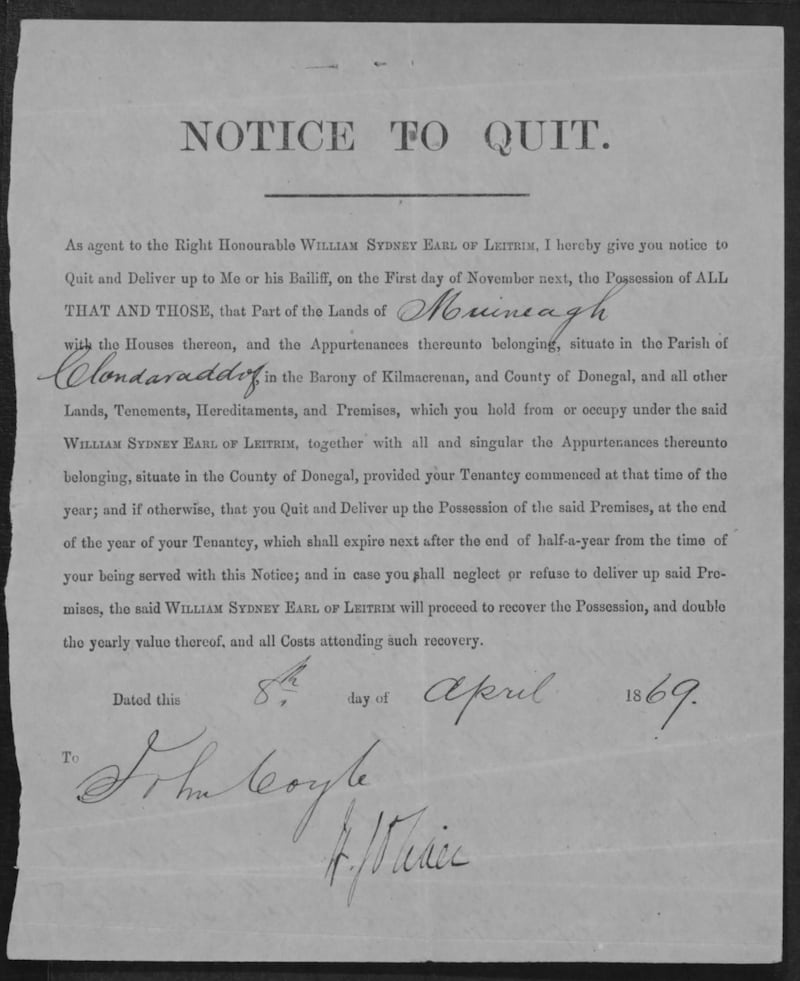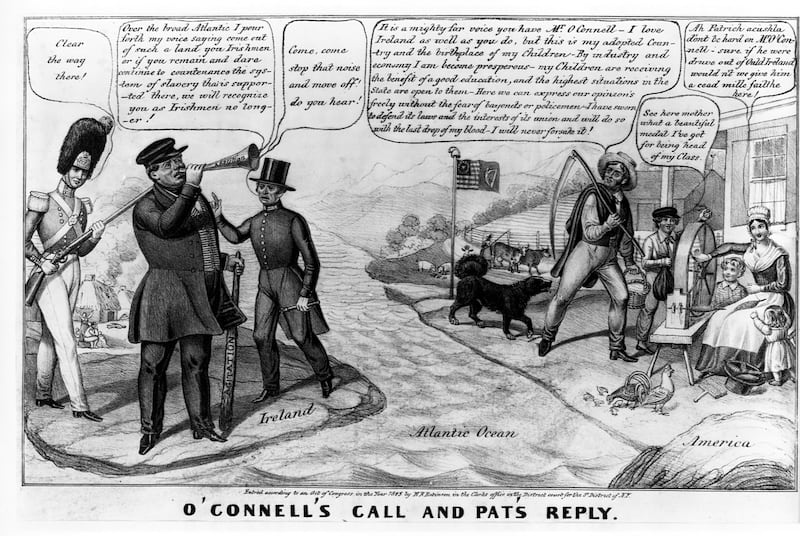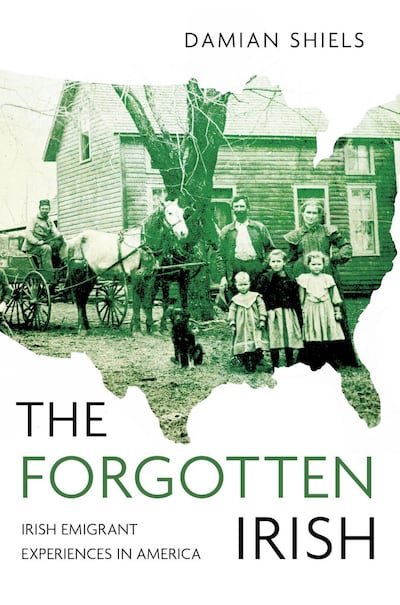In 1871, Irish emigrant Jane Murphy made the long trek from the open Illinois prairie into the city of Chicago. The 65-year-old woman was a physical wreck. A life of constant childbirth had left her with a prolapsed uterus, and she also had to endure a 6-inch tumour on her neck. Despite her condition, she had little choice but to make the journey.
Back in her decrepit shanty she had left a dying husband and invalid son, and all were in need of financial support. She hoped to obtain that support through the military service of her son Michael, who had died eight years previously during the Civil War. Sitting down in her solicitor’s office, she burst into tears as she recounted her life story, from the day in Monaghan town in 1830 when she had wed, through to her present predicament. In her own words she told of the fate of all 13 of her children– those who had emigrated never to be seen again, those that had died as children in Ireland, those that now had families of their own in America. Jane described how she and her husband supported themselves by keeping a cow and raising a few vegetables, and by cutting and hauling prairie grass to the Chicago hay market.

Jane’s exceptional account of her emigrant experience is preserved today in Washington DC’s National Archives, where it sits with the approximiately 1.28 million similar files that form the “Widows and Other Dependents” pension collection. They largely concern applications by those who had lost family members during the American Civil War, and were seeking financial assistance as a result.
These pension files provide insights into everything from family emigration, chain migration and the maintenance of trans-Atlantic connections, to indigence, alcoholism, domestic violence and bigamy. Most importantly, they allow us to hear the voices of thousands of Irish emigrants for the first time
The information contained within these files is almost certainly the greatest source of social information on individual Irish emigrant families in existence, and may well be the greatest social treasure trove on 19th century Irish people to be found anywhere, including Ireland.
Another story to be found in the archive stacks is that of Eunice Coyle, who in the 19th century was eking out a living with her husband on a small patch of land in Donegal’s Fanad Peninsula. In 1869 their notorious landlord, the third Earl of Leitrim, issued the elderly couple with a notice to quit. Concerned about their future, Eunice had a letter composed to the American Pension Bureau, explaining that “the landlord will eject us out of the bit of land that we held under him for he wants it with others to put black cattle to graze on it”. Eunice was entitled to a pension as her son, Hugh, who had been captured after Gettysburg, had died in a Confederate prison. In order to reinforce the seriousness of her situation, Eunice included the original eviction notice with her letter, sending both across the Atlantic where they still survive today.
The experiences of Jane Murphy and Eunice Coyle are just two of the countless stories associated with 19th-century Irish emigration. They demonstrate how emigration impacted not only those who had left Ireland’s shores, but also those who remained behind. Both these women were illiterate, like so many of Ireland’s 19th-century poor. Ordinarily it would be extremely difficult for us to uncover more than the most basic details regarding their lives and experiences. The only reason we can hear their voices across more than 150 years is solely due to the deaths of their sons in the American Civil War.

Somewhere in the region of 180,000 Irish-born men served Northern arms between the years 1861-65. There were tens of thousands more in Union blue who were the children of Irish emigrants, many born in England, Canada or America itself. Although it is not widely appreciated, for those Irish counties most impacted by emigration in the middle 19th century, the American Civil War represents the largest conflict in history in terms of the numbers who served. Inevitably tens of thousands of Irish died. For the families of those on the winning side, the loss of a loved one brought with it the consolation of eligibility for a federal pension. So many ex-servicemen, widows and dependents became entitled to pensions that by 1893 some 40 per cent of the entire federal budget was being spent on them.
Governments are rarely keen to dispense benefits without proof of entitlement, and therein lies the historical wealth to be found among the thousands of Irish files. Affidavits were not only provided by claimants such as Jane Murphy and Eunice Coyle, but often also by family members, friends, acquaintances, employers, landlords, shopkeepers, physicians or servicemen. Files can contain myriad other documents such as marriage certificates, baptismal records, employment details and service records. Invariably they offer an opportunity to chart an emigrant family’s life across multiple decades, for the duration of their pension claim. By far the most poignant documents to be found come in the form of original correspondence. Thousands of letters written by Irish emigrant soldiers and sailors were submitted by applicants to prove their relationship; the vast majority have never been transcribed or published before.
Somewhat surprisingly, this unparalleled historical resource has never been examined in detail from an Irish perspective, and its potential to add significantly to our knowledge of 19th-century Irish life has gone unrecognised. This is largely due to a failure in Ireland to appreciate the scale of Irish involvement in the American Civil War, as well as a historical focus which has, in the words of noted diaspora historian Prof Enda Delaney, seen our interest in the story of Irish people invariably end “with the tearful farewells at Irish ports”.

Though created as a result of the American Civil War, as the stories of Jane and Eunice demonstrate, these pension files allow us to examine much more than just that conflict. They provide insights into everything from family emigration, chain migration and the maintenance of trans-Atlantic connections, to social issues such as indigence, alcoholism, domestic violence and bigamy. Most importantly, they allow us to hear the voices of thousands of Irish emigrants for the first time.
The Forgotten Irish: Irish Emigrant Experiences in America by Damian Shiels is published by the History Press Ireland, €17.99














